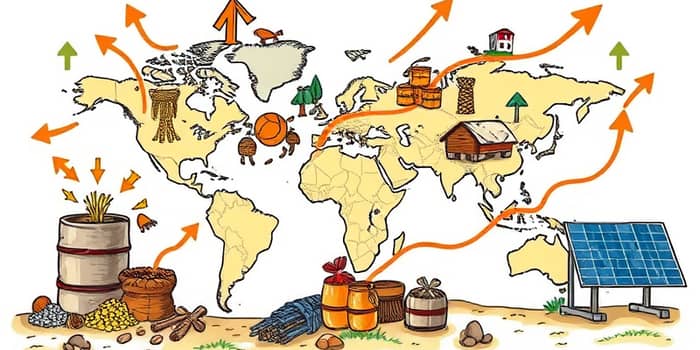
As global markets brace for shifting dynamics, a deep dive into raw material trends reveals critical insights.
The commodity landscape is set for significant movement, with prices projected to decline in 2025 as improved supplies and policy uncertainty weigh on markets. After a modest 2.5% increase in 2024, the energy sector faces the steepest drop.
The World Bank forecasts its energy price index to fall by 17% in 2025 and another 6% in 2026. Metals and minerals follow suit, expected to ease slightly through 2026 after the 2024 uptick. Agricultural commodities will see a gradual descent—1% in 2025 and 3% in 2026.
Early 2025 data illustrate a 2% quarter-on-quarter rise, but a sharp 6% April fall, driven by broad price declines. Fertilizers and precious metals, however, bucked the trend: gold soared to ~$2,790/oz and silver reached nearly $35/oz in 2024.
Different commodity segments face unique pressures. Energy markets grapple with oversupply and modest demand growth, metals balance production expansion with storage strains, and agricultural markets remain sensitive to yield variations.
These sectoral snapshots underscore the importance of tailored strategies for producers and buyers alike.
Geopolitics plays an outsized role in market volatility. Elections, conflicts, sanctions, and tariffs amplify risks across commodities.
Improving supplies in many commodities contribute decisively to the expected price declines in 2025. Still, demand patterns vary regionally.
With an aggregate commodity price index forecast to decline 1% in 2025—after a 2% rise in 2024 and a 14% drop in 2023—market participants must prepare for further swings.
Downside risks include slower global growth, persistent policy uncertainties, and escalating geopolitical tensions. In this environment, seasoned commodity traders and procurement specialists are invaluable for hedging, arbitrage, and risk mitigation.
Key regional developments will shape global supply chains and pricing.
Structural shifts in commodity finance and procurement herald a new era of market interaction. Digital financial instruments, such as digital Letters of Credit, accelerate transactional efficiency in metals and mining.
Institutional capital flows and onshore financing—like renminbi-denominated instruments—are altering traditional funding models. Procurement strategies demand sophisticated forecasting for demand and pricing, integrating seasonality, macro trends, and supplier behavior.
Collaboration between governments, traders, and energy firms in biofuels and soft commodities prompts innovative prepayment structures and working capital solutions.
As we navigate the shifting currents of raw material markets, stakeholders equipped with robust analytics, strategic foresight, and adaptive risk management will thrive in the forthcoming commodity crunch.
References













